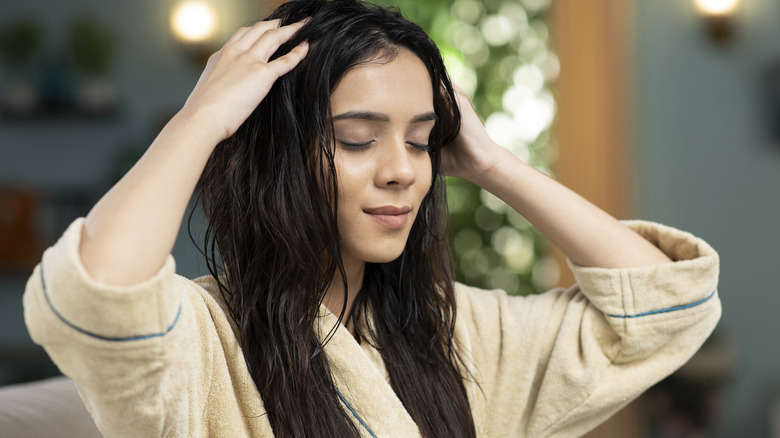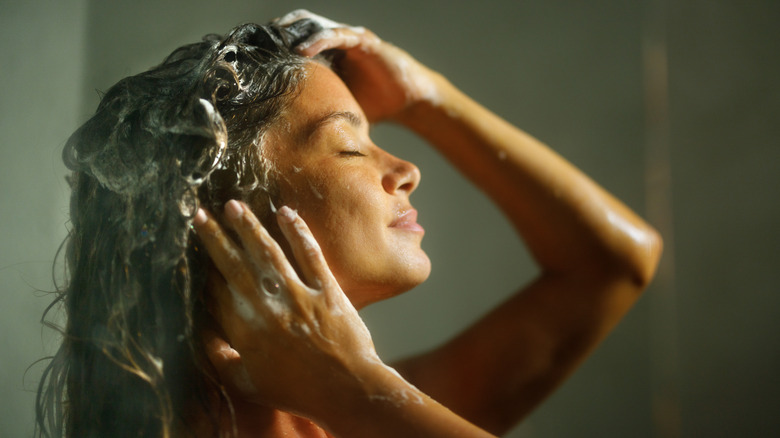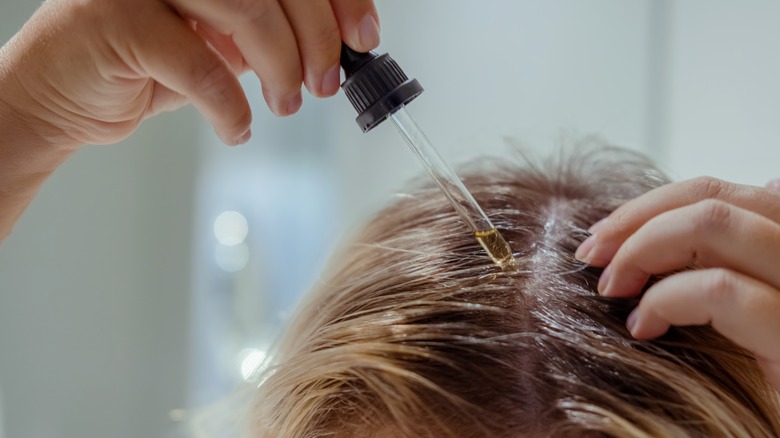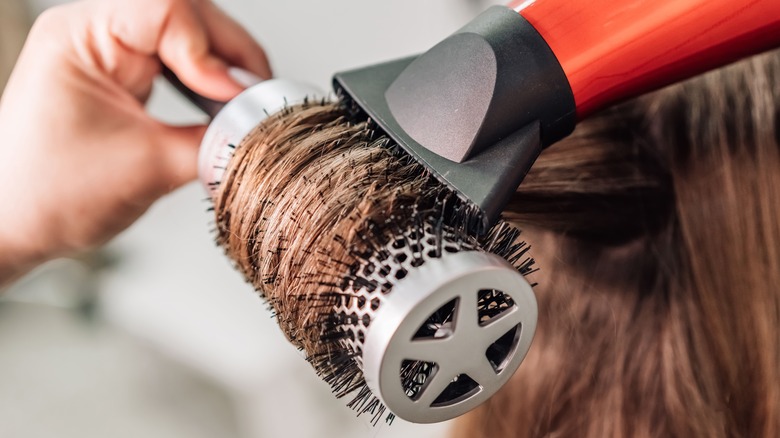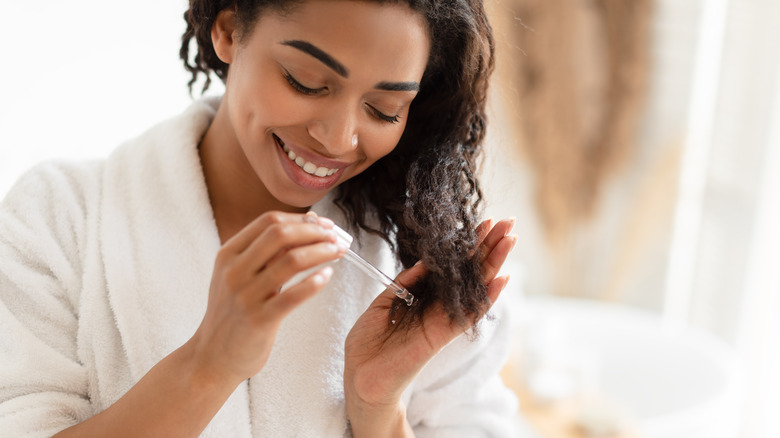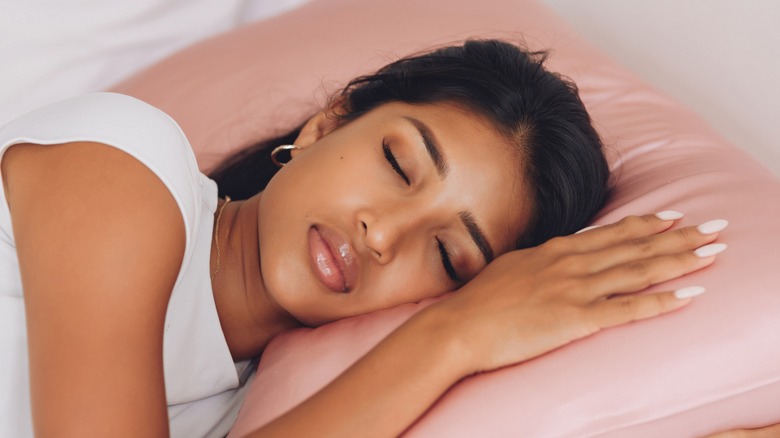Frizzy Baby Hairs Don't Stand A Chance This Summer With Our Best Tips
We may receive a commission on purchases made from links.
Love the summer weather, but hate dealing with frizzy baby hairs all season long? We hear you. Most of us get a few strands filled with frizz from time to time, but thirsty hair and high humidity can spell disaster for those with certain hair types. Whether you have wavy, curly, or plain porous locks, it's fair to say that errant flyaways are one of the most irritating beauty problems on the planet.
Worst of all, frizz has a way of making itself known no matter how hard you try to stop it in its tracks. If you have hair that is prone to frizz, you've likely tried everything under the sun to keep it at bay, just like us. However, whether you're a haircare novice or a seasoned professional, combating frizz entirely can be a tricky styling skill to master.
There's nothing more defeating than taking all the right steps against frizz only to spot its dreaded appearance a few hours later. Fortunately, by following a few styling tips, you can outsmart your hair's flyaway tendencies and banish frizz once and for all.
Start at the source: your shower
Water hardness is often the cause of hair-related issues like frizziness, limpness, and buildup from hair products. "Hard" water simply contains a higher concentration of minerals like calcium and magnesium (via United States Geological Survey). Showering with hard water can prevent your hair from absorbing products fully, leaving you with dull, unmanageable hair. Additionally, hard water exposure may increase the risk of dermatitis or skin irritation, according to a 2017 study published in the Journal of Investigative Dermatology.
Per Forbes, to determine if you have hard water, look for signs like difficulty lathering soap and shampoo, chalky buildup in or around your shower, and dull hair. Regional data, like maps, can also provide an idea of the water hardness in your area. You can also test your water using a hardness kit or contact your city's water department for more accurate information.
If you have hard water, there are several ways to soften it and improve your hair's health. First, consider investing in a water-softening shower head, like the AquaBliss Shower Filter, to mitigate mineral deposits. You can also use a purifying shampoo, such as Malibu C's Hard Water Wellness Collection. Finally, WebMD recommends trying an occasional apple cider vinegar rinse, a quick in-shower treatment believed to work wonders against hard water buildup.
Don't skimp on in-shower treatments
Properly hydrated hair, including baby hairs, is far less likely to frizz up — after all, frizz is more or less your strands wandering off in search of moisture. "When examined under a microscope, a healthy cuticle lays down smooth, like the scales of a fish," Hair Cuttery Family of Brands director of technical training Steve Waldman told Healthline. "... as hair becomes dry and damaged, its appearance resembles a pine cone: open, rough and prickly."
Using a leave-in conditioner is one of our favorite time-saving shower hacks, but it's not the only tool you can try. Many people swear by pre-oiling their hair with products like Mielle Organics Rosemary Mint Scalp & Hair Strengthening Oil just before showering to help keep their hair feeling smooth and healthy. However, no matter which products you go for, it's essential to do your research and select high-quality hair care.
By using products that truly work, you'll spend less time (and money) on duds that do nothing but clutter your medicine cabinet and shower. You don't necessarily need to spend more on high-end products, but experts often tout luxury lines as being gentler and more effective than budget buys. "You're paying for the quality ingredients and the technology and research that went into developing these good ingredients," stylist Kristina Barricelli explained to Byrdie. If you're hesitant to splurge on pricier hair care, look for samples at beauty retailers and shop with stores that have customer-friendly return policies.
Your hair-drying method can make all the difference
The way you dry your hair significantly affects how it reacts to humidity. Plopping your curly hair can preserve its body and reduce frizz with minimal effort, similar to heatless curlers or wrapping methods. To plop your hair, simply run your desired post-shower products throughout your hair, arrange it atop your head with an old cotton T-shirt, and leave it for an hour or less. The result? Your hair, even those pesky baby hairs, should be hydrated, soft, and manageable once fully dried.
While blow-drying and styling take substantially more time than air-drying, smoothing out follicles while they're still damp can help keep flyaways in order until your next wash day. While the life of your blowout may vary, it's a worthwhile technique to use against frizz, especially under very humid conditions.
If you're not sure if you can pull off a masterful blowout, don't worry. Modern advancements in the realm of styling products have made it simple for just about anyone to achieve silky-smooth, salon-quality perfection at home. Beauty fans love the Dyson Airwrap styler for its ease of use and long-lasting results, but you can also try a combination brush and blow dryer, like Drybar's Smooth Shot Paddle Blow Dryer Brush.
Choose your styling products wisely
Selecting the right styling products for your hair depends on its type. Your goal should be to tame your baby hairs without weighing your strands down or drying them out. It's crucial to understand how to use each product properly, as this can significantly impact its performance. For instance, a frizz-fighting spray designed for damp hair won't work on dry hair.
When styling your hair to prevent frizz, consider your drying technique and the look you want to achieve. If you've used the plopping method, stick to wave or curl-enhancing products like Curls' Blueberry Bliss Reparative Leave-In Conditioner or Briogeo Banana + Coconut Soft Wave Texture Spray. On the other hand, freshly blow-dried hair may not require as much product, but it will benefit from a protective coating to prevent baby hairs from popping up. In this case, hairspray is a go-to option, but we recommend the convenience and efficiency of a hair "mascara" like Funan Hair Finishing Stick.
If your hair still feels dry, use a small amount of hair cream or oil and rub it between your palms, smoothing it over your crown and length. Remember, sometimes less is more. From experience, we've learned that an extra drop of cream or oil-based product can make your hair go from shiny to greasy in seconds.
Protect against damage to minimize breakage
While it's true that some frizzy baby hairs may be regrowth, damage is frequently to blame for flyaway strands. "If it is breakage, the hair along the edge of your hairline will feel dry, it will also be uneven in length and brittle. You will also notice split, frayed hairs," trichologist Sophia Emmanuel explained to Allure. It's crucial to take good care of your hair before damage takes hold. Even if avoiding chemical treatments is out of the question — we get it, grays aren't for everyone — there are still methods you can try to keep your hair feeling its best.
If you're not already using silk pillowcases, it's a good time to start. Silk or satin pillowcases aren't just good for the skin – they can also help fight against hair breakage as you sleep, preventing strands from snagging against your pillow. And for added damage-fighting benefits before bed, utilize protective hairstyles like classic French braids. Furthermore, sticking to soft nylon hairbands or scrunchies is another helpful way to minimize wear and tear on your hair over time.
Above all, it's imperative to stay on top of monthly trims. Preventing split ends isn't always possible, but getting a thorough trim is the fastest and most effective way to eliminate them. Be mindful of your styling choices and practice healthy lifestyle habits to stimulate hair growth after each cut. With your new haircare routine set in motion, frizzy baby hairs should be a problem of the past.
